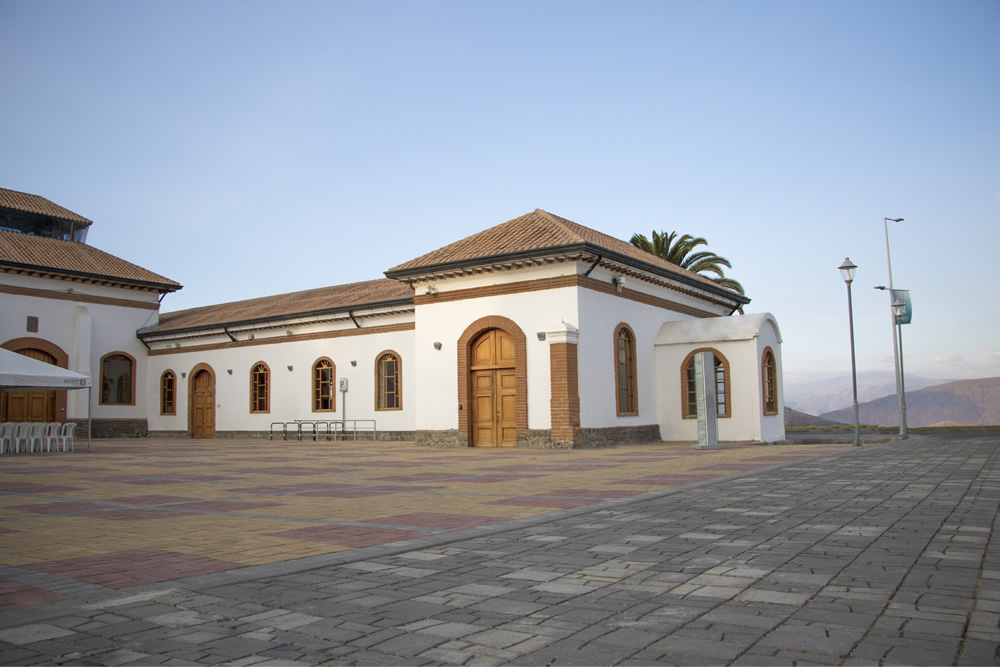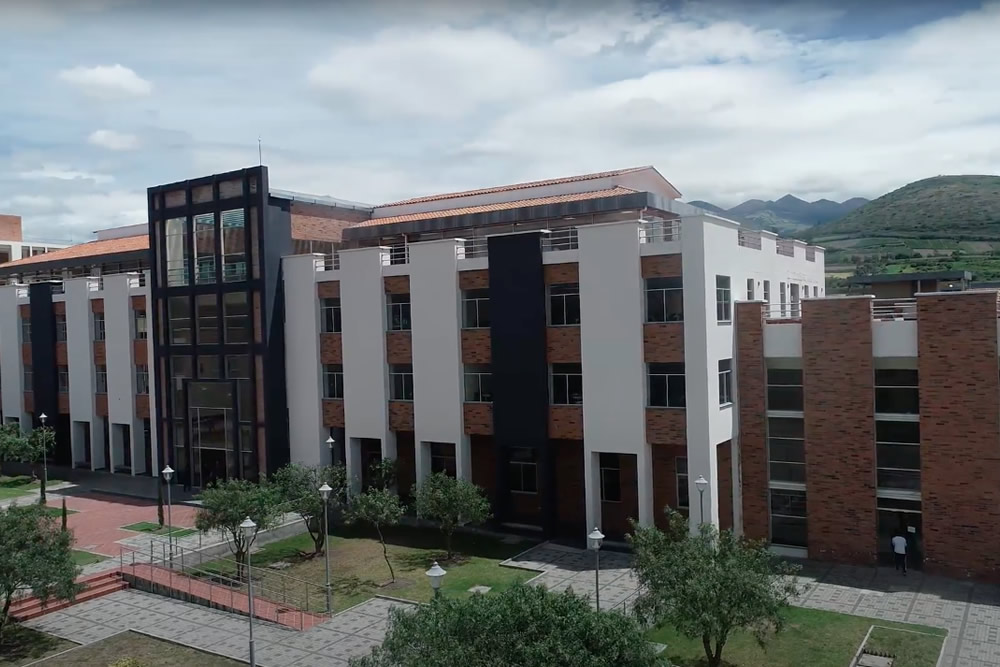Variation of the paleomagnetic and rock magnetic properties across a ~20 m thick andesitic lava flow (Tungurahua Volcano, Ecuador): implications for paleointensity / Guido Efraín Malán Chugñay ; tutor Richard Anselmi Pérez Roa
Tipo de material: TextoIdioma: Inglés Idioma del resumen: Español Fecha de copyright: Urcuquí, 2023Descripción: 68 hojas : ilustraciones (algunas a color) ; 30 cm + 1 CD-ROMTema(s): Recursos en línea: Nota de disertación: Trabajo de integración curricular (Geólogo/a). Universidad de Investigación de Tecnología Experimental Yachay. Urcuquí, 2023 Resumen: Data on the Earth’s magnetic field strength is diversely applicable from dating archeological artifacts or lava flows to understand early earth’s evolution and the mechanisms of the geodynamo. Lava flows are commonly used to obtain records of this paleointensity. Understanding the underlying paleomagnetic and rock magnetic properties and how they vary across a flow is crucial to ensure the collection of good-quality samples for analysis. The success of paleointensity, as well as paleomagnetic analysis, is strongly dependent on the rock-magnetic properties of the samples, and large variations may exist between samples even of the same unit, related mainly to varying cooling rates. The active Tungurahua volcano is one of the most prominent features in the Ecuadorian Eastern Cordillera with numerous basaltic andesite and andesitic lava flows exposed along its flanks. To appraise the relation between volcanic emplacement processes and rock-magnetic properties, we sampled a vertical transect in a ~20 m thick lava flow at Tungurahua volcano. A total of 55 oriented in situ samples from six sites distributed across the Ulba Cascada lava flow were collected for this purpose. We present a petrographic analysis of each sample as a function of the depth within the lava flow, with an emphasis on the textural and structural characteristics of magnetic minerals as observed with transmitted, reflected light and scanning electron microscopes. Moreover, a detailed analysis of rock-magnetic properties such as magnetic susceptibility, and hysteresis (remanent magnetization, saturation remanent magnetization, coercivity, and back-field coercivity), along with detailed stepwise alternating field and thermal demagnetization will allow us to determine the direction of the magnetic field and assess the variations of magnetic properties concerning the position within a lava flow. We will also discuss the correlations that may exist between grain size, the oxidation state of the magnetic minerals, and the emplacement processes of a lava flow, as well as the implications of all these results to paleointensity determinations.
TextoIdioma: Inglés Idioma del resumen: Español Fecha de copyright: Urcuquí, 2023Descripción: 68 hojas : ilustraciones (algunas a color) ; 30 cm + 1 CD-ROMTema(s): Recursos en línea: Nota de disertación: Trabajo de integración curricular (Geólogo/a). Universidad de Investigación de Tecnología Experimental Yachay. Urcuquí, 2023 Resumen: Data on the Earth’s magnetic field strength is diversely applicable from dating archeological artifacts or lava flows to understand early earth’s evolution and the mechanisms of the geodynamo. Lava flows are commonly used to obtain records of this paleointensity. Understanding the underlying paleomagnetic and rock magnetic properties and how they vary across a flow is crucial to ensure the collection of good-quality samples for analysis. The success of paleointensity, as well as paleomagnetic analysis, is strongly dependent on the rock-magnetic properties of the samples, and large variations may exist between samples even of the same unit, related mainly to varying cooling rates. The active Tungurahua volcano is one of the most prominent features in the Ecuadorian Eastern Cordillera with numerous basaltic andesite and andesitic lava flows exposed along its flanks. To appraise the relation between volcanic emplacement processes and rock-magnetic properties, we sampled a vertical transect in a ~20 m thick lava flow at Tungurahua volcano. A total of 55 oriented in situ samples from six sites distributed across the Ulba Cascada lava flow were collected for this purpose. We present a petrographic analysis of each sample as a function of the depth within the lava flow, with an emphasis on the textural and structural characteristics of magnetic minerals as observed with transmitted, reflected light and scanning electron microscopes. Moreover, a detailed analysis of rock-magnetic properties such as magnetic susceptibility, and hysteresis (remanent magnetization, saturation remanent magnetization, coercivity, and back-field coercivity), along with detailed stepwise alternating field and thermal demagnetization will allow us to determine the direction of the magnetic field and assess the variations of magnetic properties concerning the position within a lava flow. We will also discuss the correlations that may exist between grain size, the oxidation state of the magnetic minerals, and the emplacement processes of a lava flow, as well as the implications of all these results to paleointensity determinations.
| Tipo de ítem | Biblioteca actual | Signatura | Copia número | Estado | Fecha de vencimiento | Código de barras | Reserva de ítems | |
|---|---|---|---|---|---|---|---|---|
 Tesis
Tesis
|
Biblioteca Yachay Tech | ECTEA0038 (Navegar estantería(Abre debajo)) | 1 | No para préstamo | T000529 |
Trabajo de integración curricular (Geólogo/a). Universidad de Investigación de Tecnología Experimental Yachay. Urcuquí, 2023
Incluye referencias bibliográficas (páginas 53-61)
Trabajo de integración curricular con acceso abierto
Texto (Hypertexto links)
Data on the Earth’s magnetic field strength is diversely applicable from dating archeological artifacts or lava flows to understand early earth’s evolution and the mechanisms of the geodynamo. Lava flows are commonly used to obtain records of this paleointensity. Understanding the underlying paleomagnetic and rock magnetic properties and how they vary across a flow is crucial to ensure the collection of good-quality samples for analysis. The success of paleointensity, as well as paleomagnetic analysis, is strongly dependent on the rock-magnetic properties of the samples, and large variations may exist between samples even of the same unit, related mainly to varying cooling rates. The active Tungurahua volcano is one of the most prominent features in the Ecuadorian Eastern Cordillera with numerous basaltic andesite and andesitic lava flows exposed along its flanks. To appraise the relation between volcanic emplacement processes and rock-magnetic properties, we sampled a vertical transect in a ~20 m thick lava flow at Tungurahua volcano. A total of 55 oriented in situ samples from six sites distributed across the Ulba Cascada lava flow were collected for this purpose. We present a petrographic analysis of each sample as a function of the depth within the lava flow, with an emphasis on the textural and structural characteristics of magnetic minerals as observed with transmitted, reflected light and scanning electron microscopes. Moreover, a detailed analysis of rock-magnetic properties such as magnetic susceptibility, and hysteresis (remanent magnetization, saturation remanent magnetization, coercivity, and back-field coercivity), along with detailed stepwise alternating field and thermal demagnetization will allow us to determine the direction of the magnetic field and assess the variations of magnetic properties concerning the position within a lava flow. We will also discuss the correlations that may exist between grain size, the oxidation state of the magnetic minerals, and the emplacement processes of a lava flow, as well as the implications of all these results to paleointensity determinations.
Textos en inglés con resúmenes en español e inglés
No hay comentarios en este titulo.



